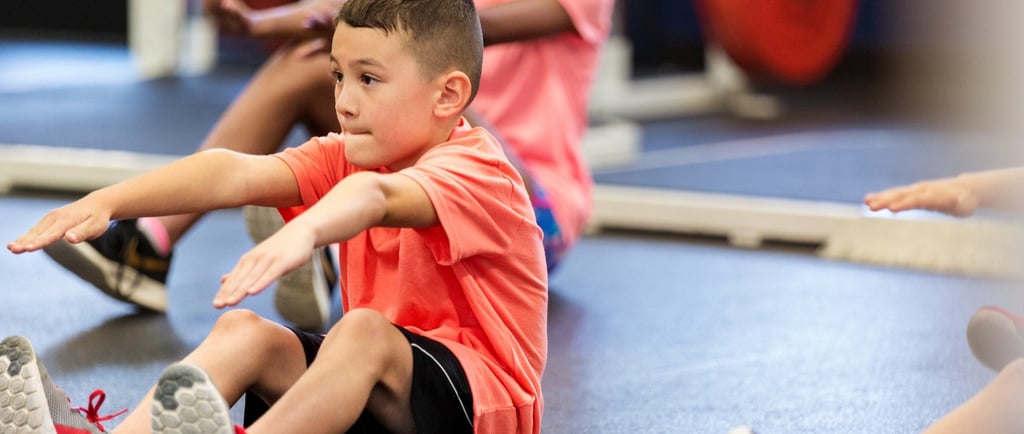When Should Youth Baseball Players Start Strength Training?
Wondering when your child should start strength training for baseball? Learn what age is safe, what exercises are appropriate, and how strength impacts performance.


If you’re a parent of a young baseball player, you’ve probably asked this question:
“When should my child start strength training?”
It’s a great question — and the answer isn’t one-size-fits-all.
At Swing Lab, we work with athletes from age 8 to college, and strength training is a big part of our long-term development strategy. But not all strength training is created equal. For youth athletes, especially baseball players, safety and smart progression are essential.
This article will break down the ideal age to start strength training, what type of exercises are appropriate, and how a properly designed program can support both performance and injury prevention.
What Is “Strength Training” for Youth Athletes?
Before we talk age, we need to define terms.
Strength training doesn’t necessarily mean lifting heavy weights. For youth athletes (especially under 13), strength work is more about movement quality, control, and injury prevention than building muscle mass.
Proper youth strength training includes:
Bodyweight movements (squats, push-ups, planks, lunges)
Balance and coordination drills
Light resistance training with dumbbells, medicine balls, or bands
Mobility and flexibility work
Core stability training
The goal isn’t to bulk up — it’s to build a strong, stable, and efficient body that supports good mechanics and healthy movement.
What Age Should Youth Baseball Players Start Strength Training?
Most players can begin basic strength and movement training between the ages of 8 and 10 — as long as the program is age-appropriate, well-coached, and focused on movement, not load.
Here's a simple breakdown:
Ages 8–10: Bodyweight strength, coordination, balance, movement patterns
Ages 11–13: Introduce light resistance and more structured training
Ages 14+: Begin progressive overload with proper technique and supervision
Every athlete is different. A player’s readiness depends more on maturity and body awareness than on age alone.
At Swing Lab, we assess each athlete’s movement ability before introducing strength work. If a player can’t perform a bodyweight squat or hold a proper plank, we don’t hand them a weight — we teach the basics first.
Benefits of Strength Training for Youth Baseball Players
Done right, strength training offers huge benefits to young athletes — both in performance and health.
Improved throwing and hitting mechanics
Increased bat speed and power
Better posture and balance
Injury prevention (especially in shoulders, elbows, and lower back)
Enhanced coordination, agility, and body control
Boosted confidence on the field
When a player’s body moves better, their swing improves, their throws get cleaner, and their reaction time sharpens. Strength gives them the foundation to unlock better mechanics.
Common Myths About Youth Strength Training
Let’s clear up a few misconceptions that cause hesitation:
“Lifting stunts growth.”
False. There’s no evidence that age-appropriate strength training negatively impacts growth plates. In fact, resistance training done properly can support bone health and growth.
“Kids aren’t strong enough to lift.”
That’s exactly why we train. Strength training improves muscle control, not just force production.
“Baseball players don’t need to lift — it’ll mess up their swing.”
When done right, strength training improves swing mechanics by building stronger hips, core, and posture. The key is balancing mobility with strength and staying athletic.
Key Focus Areas for Young Baseball Players
Here are the areas we prioritize when designing strength programs for youth athletes:
Core Stability
A strong core supports rotation, balance, and control in both hitting and throwing. We focus on anti-rotation drills (planks, dead bugs, bird dogs) rather than crunches.Hip Strength and Mobility
Strong hips = stronger swings and better movement on the field. Glute bridges, lunges, and step-ups are foundational.Shoulder Stability
To protect the throwing arm, we train the muscles around the shoulder blade and rotator cuff. Band work and bodyweight rows are great tools.Balance and Coordination
Baseball requires precise movement. Single-leg drills, reaction games, and coordination circuits help athletes move with confidence and control.Movement Mechanics
Before weights, we teach how to move: squat, hinge, push, pull, rotate. These are the foundations of both sport and strength.
What a Sample Youth Strength Session Looks Like
Here’s a sample 30-minute strength training session for a 10–12 year-old baseball player:
Warm-Up (5 min): Dynamic stretches, jumping jacks, high knees
Movement Prep (5 min): Hip bridges, bird dogs, bodyweight squats
Strength Circuit (15 min):
Push-ups (or incline push-ups) – 3x8
Split squats – 3x6/leg
Resistance band rows – 3x10
Front plank – 3x20 seconds
Athletic Finishers (5 min):
Lateral bounds
Reaction catches or cone drills
Sessions should be fun, safe, and movement-focused — not about how much weight they can lift.
Final Thoughts
Strength training is not just safe for youth baseball players — it’s one of the most powerful tools for long-term athletic development.
The key is doing it the right way: age-appropriate exercises, proper form, and consistent guidance from coaches who understand how to train young athletes.
At Swing Lab, our strength programs are designed specifically for baseball players. We help athletes move better, hit harder, and stay healthy through science-based programming and expert coaching.
Wondering if your athlete is ready to start strength training? Contact Swing Lab to schedule an intro session — we’ll evaluate your player’s current movement, discuss goals, and help you build a smart, age-appropriate plan for long-term development.
from: getty images
Excuses don't get walk-offs
get in the lab
info@lexasport.com
+1 (972) 638-0872
© 2025. All rights reserved.
NTX Swing Lab is a division of LEXA Sport
